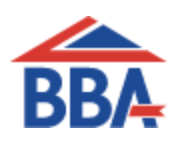Effective dry and wet rot removal
If you are looking for reliable dry and wet rot removal services in Norfolk, Suffolk and Cambridgeshire, get in touch with Propertymasters. Our team specialises in protecting your property from the damage caused by rot. Talk to our professional team today.
Wet rot
Wet rot is a term applied to a range of fungal attacks. Typically the timbers at risk have moisture content in excess of 50%. Each type of fungus has its own characteristics and may attack timber in different ways but they also have common features, the most important being they all limit their attack to damp timber. Unlike dry rot, there is little threat to masonry or dry timbers. Extensive chemical treatment is not generally necessary and remedial action is directed towards removing the moisture source, improving ventilation and replacing affected timbers. Dry rot and wet rot can be easily confused by inexperienced surveyors. It is therefore advisable to instruct a CSRT qualified surveyor to diagnose the type of decay and recommend appropriate remedial treatment.
Dry rot
Dry rot (Serpula lacrymans) typically attacks timbers with a moisture content of around 23%. Dry rot requires more extensive treatment than wet rot so accurate diagnosis is critical. Left unchecked, dry rot can lead to extensive damage both to the timbers and masonry. Dry rot typically establishes in areas where there is limited ventilation and is commonly associated with plumbing leaks or rainwater entering a property due to a building defect. Dry rot feeds on the cellulose content of timber, leaving it weakened and unsound.
Dry rot has 4 elements: hyphae, mycelium, sporophores and spores.
The hyphae or strands are usually off-white in colour and have the appearance of a root system. Their purpose is to transfer nourishment to the other components of the fungus and to search out new food sources. The mycelium usually takes more of a sheet or skin form but variations occur. It is usually accompanied by a mushroom type smell. The sporophore or fruiting body is the reproductive mechanism of the fungus. It appears either plate or bracket shaped and has a rusty red appearance usually with a pale off-white perimeter. Other colours such as lilac can also be present depending on humidity and other conditions. The sporophore ultimately bursts to release thousands of rusty red spores over the surrounding areas. The spores are individual ‘seeds’, each with the potential to create a new outbreak of dry rot.
Dry rot has 4 elements: hyphae, mycelium, sporophores and spores.
The hyphae or strands are usually off-white in colour and have the appearance of a root system. Their purpose is to transfer nourishment to the other components of the fungus and to search out new food sources. The mycelium usually takes more of a sheet or skin form but variations occur. It is usually accompanied by a mushroom type smell. The sporophore or fruiting body is the reproductive mechanism of the fungus. It appears either plate or bracket shaped and has a rusty red appearance usually with a pale off-white perimeter. Other colours such as lilac can also be present depending on humidity and other conditions. The sporophore ultimately bursts to release thousands of rusty red spores over the surrounding areas. The spores are individual ‘seeds’, each with the potential to create a new outbreak of dry rot.





